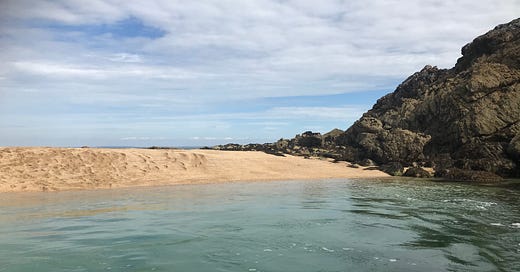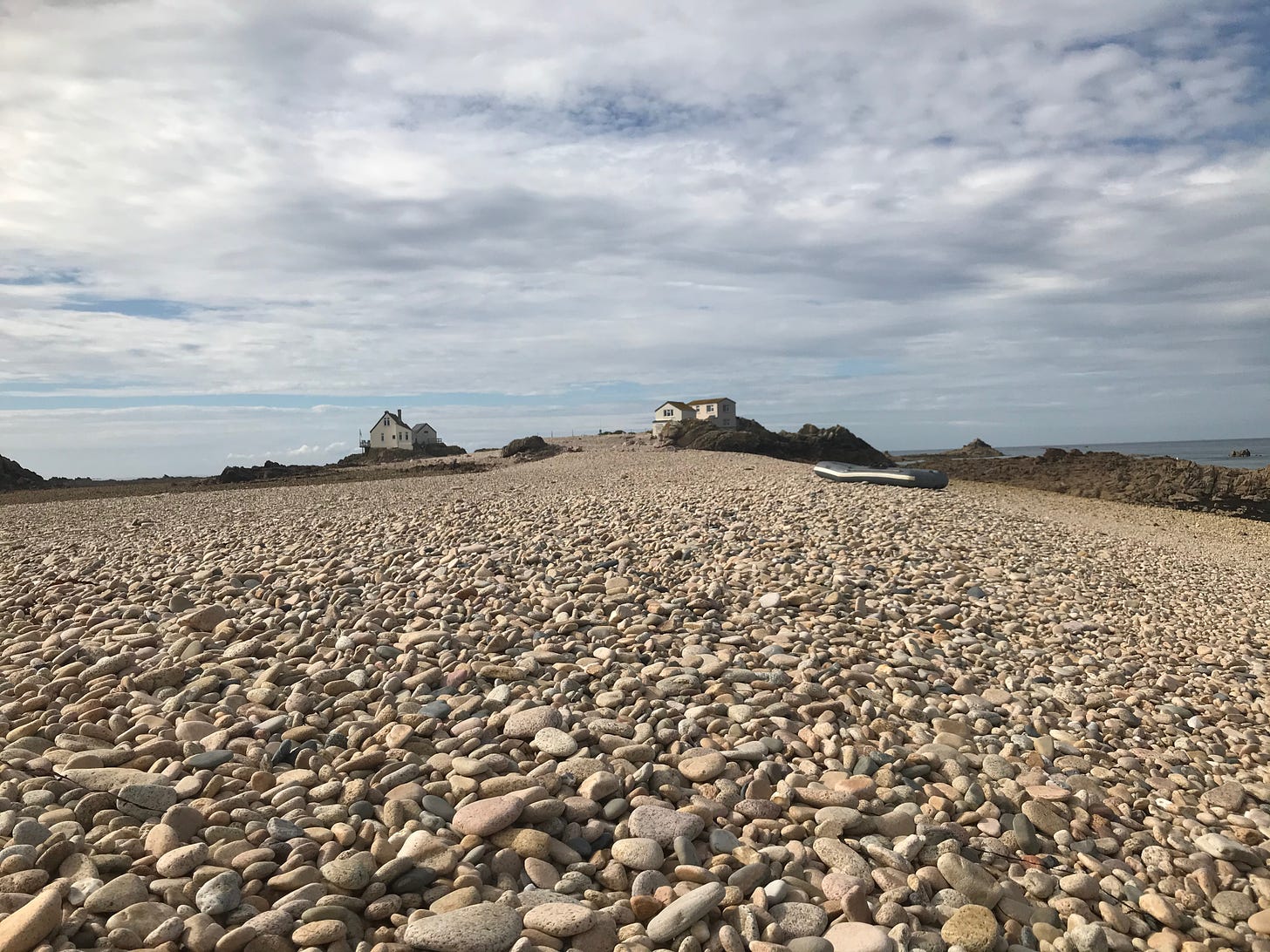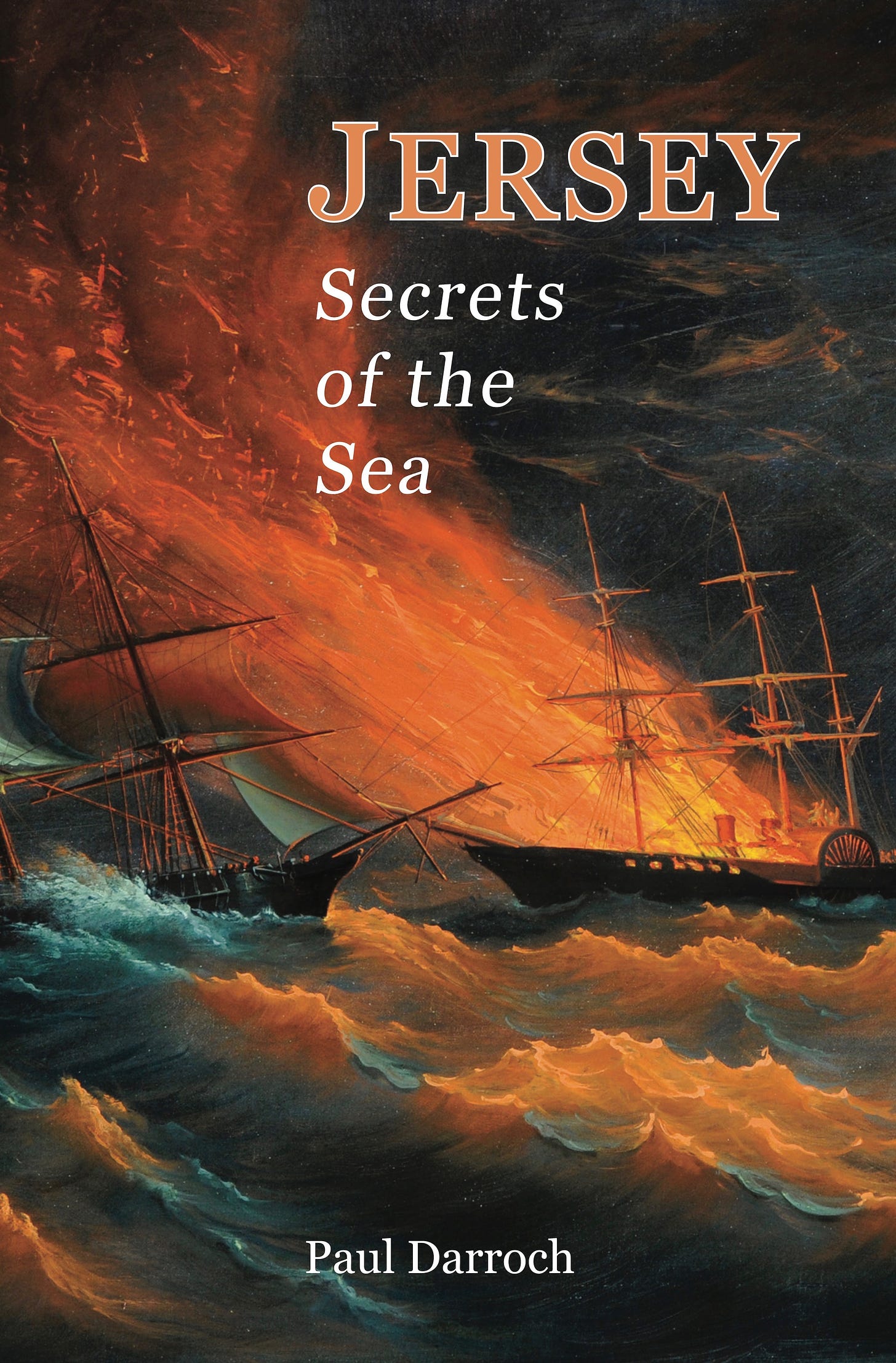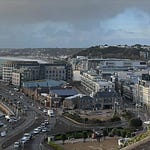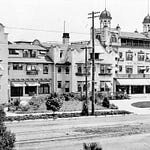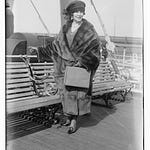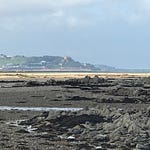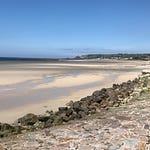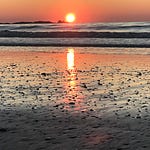As summer draws to end, I’m pleased to present another short story drawn from Jersey’s rich history. This is an autumn tale from the Ecréhous, that lonely scattering of rocks perched between Jersey and Normandy. It is well suited to the darker evenings to come. ~ Paul Darroch
November 2nd, 1872
Welcome to Jersey’s Ecréhous; a drowned land, a labyrinth of reef and rock, the hill-tops of a vanished world. The tide turns sharp as a blade here, as twice a day the land sinks back to its watery grave, and the sea floods in to reclaim its own. The shallow water bristles with sandbars and spines of rock. They can flay a ship of its hull in minutes.
In times gone by, only a skilled navigator would dare venture close, for this school of the sea was a notoriously harsh teacher. As night fell over Victorian Jersey one freezing November, a fresh phalanx of clouds was mustering on the eastern horizon. Another punishing lesson was about to begin.
The ‘King of the Ecréhous’ felt the stones of his hut shudder in the brewing storm. Philippe Pinel was an eccentric recluse, who had joyfully embraced a fierce and primitive life on the reef with his long-suffering wife Jeanne. The sea was their only larder, and they kindled their housefire with seaweed. In the fiercest storms, when the waves threatened to scour the reef clean, they crawled into a heavy stone refuge and crouched until the tempest had passed. They ruled here alone, the only souls in their barren kingdom.
As the Pinels cowered in their hole, the skies exploded with an appalling bellow. The rocks around them seemed to scream with the cry of a wounded giant. Philippe darted out into the fierce night, and he saw two hundred tons of ship plunge straight into the outer rocks.
She was a transatlantic trader, the Isabella Northcote of Christiana, freighted with lumber, cut from the heart of Canada. Now the great ship was disembowelled in moments, and her fat cargo of Montreal timber was spilled like matchwood onto the sea. The Norwegian crew tried to lower a lifeboat, but it was soon shredded by the reef. Now the sailors were plunged helpless into the raging water, clinging to the floating spars of wood, fighting for their lives. A salvo of white distress flares danced above them in the starless night.
Heedless of the storm, Philippe Pinel rushed towards them. Yet he soon realised he was not alone, for another boat was mooring close at hand. He recognised these rescuers; Charles Blampied, Elie Whitley and John Bouchard, manning the Rozel lifeboat. Despite the brutal waves, in conditions as appalling as any visited upon these forsaken rocks, they had set out into the night to rescue their fellow mariners.
In the vicious, blustery night, Blampied and his men brought every one of them home. They hauled in the gaggle of soaking, shivering sailors, and Pinel directed them to the shelter of his rough stone hut. Scooped out of the ice-breath of the sea, the sailors gradually revived by the warmth of Mrs Pinel’s seaweed hearth. Blampied ferried six crewmen back to Rozel, and the remaining twelve stayed huddled in the hut until morning. When the red dawn broke, the carcass of the marooned ship remained wedged on the rocks, and strewn timber still littered the reef; but every man had been saved.
After a flurry of confusion and rumour, the press rejoiced in the miracle of the Ecréhous. Charles Blampied received an official silver medal from a grateful Norwegian government. The Royal National Lifeboat Institution bestowed its own prestigious silver medal on Blampied, Whitley and Bouchard, along with five pounds apiece.
Philippe and Jeanne Pinel were also rewarded with a gift of five pounds. It was a somewhat puzzling bequest for a couple who lived on the fruits of the sea, miles from the shore. No-one knows how exactly this curious windfall was spent, though some say that the rocks of the Ecréhous flowed with streams of brandy for many winters to come.
Paul Darroch is the author of Jersey: The Hidden Histories and Jersey: Secrets of the Sea, both published by Seaflower Books.
(c) Paul Darroch 2021

